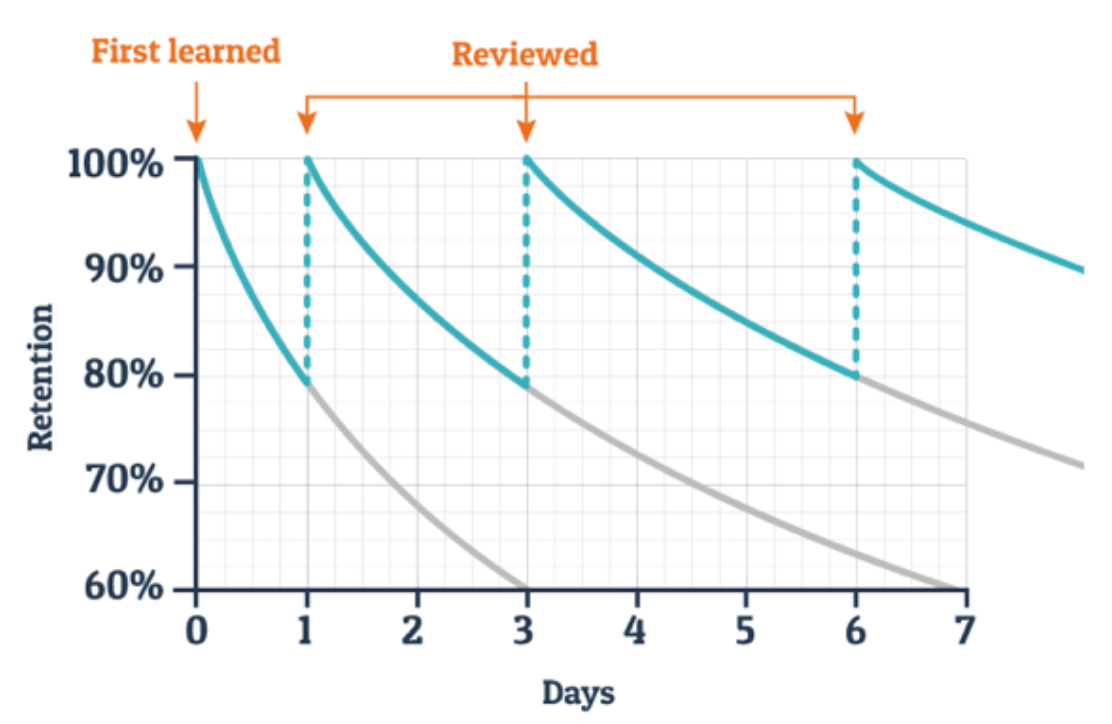Spaced Learning
I love to read and get through a couple of hundred books a year not, by the way, that I finish anywhere near that number. Whilst reading is a pleasurable experience in the moment I was doubtful whether much of the ideas and concepts encountered were being retained which, given 99% of what I read is non-fiction, would be something of a waste.
Ever since reading this excellent Wired Article about spaced learning I’ve been a fan and have built up a daily routine for collecting stuff that I learn and storing into a system where it can be systematically remembered.
1. Problem of Forgetting and Spaced Learning
The problem is that much of the information we learn remains in our brain, but we can’t recall it. The idea behind spaced learning is that by prompting recollection at regular, calculated intervals we can arrest the ‘forgetting curve’ and, over time, commit what we’re trying to learn more firmly to memory.
There is an ideal time to practise what we have learned; too soon and we waste our time, too late and you’ve forgotten the material.

(image from wranx.com)
2. Meet Ankimono and Daily Practise
I would have preferred to have honoured the originator of the idea and have used his SuperMemo application. However it’s an aesthetic disaster and it is not web-based. After some research I decided on a tool called Ankimono.
Ankimono allows to me to create prompt cards that are grouped into decks. Each prompt card has ‘front’ and a ‘back’, the front is the prompt and the back contains the data I’m trying to remember.
I use decks on two levels; first for broad categories (eg mental models, quotes) and secondly to collect the main ideas from books that I have found particularly interesting. I use the highlight function on the Kindle as I’m reading and later review on the desktop Kindle app, transferring important ideas on to the cards.
Once transferred into the application the spacing is automatically taken care of, and the the cards that are due for review are clearly highlighted.
On a daily basis I try to a) add one new card and b) successfully review all of the cards that are due, which sometimes takes a few attempts throughout the day.
I’m only about 9 months in, but I’ve managed to stick to the habit, and my n=1 experience is that it has helped me not only remember more of what I’ve read, but also to achieve a deeper, more visceral, understanding of the concepts and ideas.
